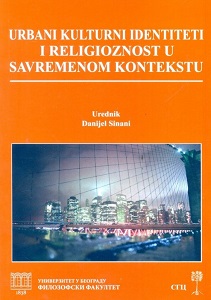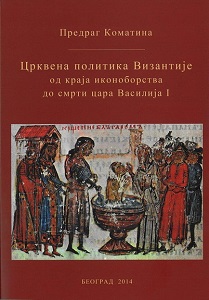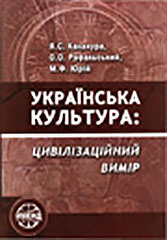
We kindly inform you that, as long as the subject affiliation of our 300.000+ articles is in progress, you might get unsufficient or no results on your third level or second level search. In this case, please broaden your search criteria.



The Iconoclast era of Byzantine history ended with the death of Emperor Theophilus on January 20th, 842. His wife Theodora, who took power in the name of their young son Michael III, devoted to Orthodoxy even during Theophilus’ life- -time, immediately began preparing the ground for the restoration of the veneration of icons. With this aim, she first held counsel with her associates in the state leadership – the Logothete Theoctistus, Sergius Nicetiates and her brothers Bardas and Petronas. At that meeting of the state leadership, the decision was made to renew the cult of icons, and the Empress released from imprisonment and persecution all monks, priests, bishops and lay people who had been persecuted for their veneration of icons. Next she convened the Council in Constantinople where the icon veneration would again be declared the official dogma of the church. The Council was held in early March 843. Participants included representatives of state authorities, priest and monks from the Constantinopolitan and provincial monasteries. The monks of the Capital were led by Hilarion of the Dalmatou, and a major figure among provincial monks was Simeon Stylite the Younger. The spiritual patron of them all was the famous ascetic Joannicius. Only the Studites represented a particular fraction. At the Council a valid Definition of faith was read and proclaimed, that is, the Horos of the Seventh Ecumenical Council of Nicaea 787, which had restored the veneration of icons after the first iconoclast period. The Council of 843 merely recalled the decisions of the Iconoclast Council of 815, and restored the decisions of the Council of 787. At the same Council the iconoclast Patriarch of Constantinople John VII the Grammarian was ousted, and the monk Methodius, a candidate of the provincial monks who also was in the Empress’s favor was chosen for the patriarchal throne. After his election, the people gathered spontaneously in front of St. Sophia and, led by the monks, conducted a procession that carried the icon of the Virgin and the Christ Child to the Bronze gates. This was a symbolic act, since the absence of Icon of Christ from the Gate had symbolized the supremacy of iconoclasm. This spontaneous procession was the forerunner of the later Procession of Orthodoxy. That day, which was the Sunday of the first week of Lent and which fell that year on March 11th, became known as the Sunday of Orthodoxy.
More...
History of Spirituality attempts to capture the basic elements constituting the spiritual life of Christians in the initial five centuries of the Church’s existence. Since Christianity was born at the intersection of two worlds, Jewish and Greek-Roman, it seems indispensable to first briefly characterize the spiritual life of the said two cultural areas. This very topic is the subject of Chapter One. The subsequent chapter, in turn, discusses foundations of Christians’ spiritual life: baptism, which defines the Christian identity, the Holy Eucharist, the place occupied by the Holy Bible in the life of Christians, as well as prayer and fasting. The chapter which follows outlines the two spiritual traditions developed in the early days of the Church. First of them was for the most part eschatologically-oriented, praising martyrdom, and treating what is earthly and worldly as a mere transition period unworthy of our undivided attention. The second tradition aims to edify human spirituality based on the promise of resurrection. It likewise sees the readiness for martyrdom as Christianresponsibility, but at the same time underscores achieving perfection here on Earth. Besides, this tradition draws upon the Greek philosophy and values the state structures, thereby indicating that a Christian, exactly by virtue of adhering to his faith, is supposed to be a good citizen. Among the representatives of the foregoing tradition the book enumerates and particularly discusses Clement of Alexandria and Saint Ambrose of Milan. What is specific to Christian spirituality are the ideals of virginity and celibacy, the spiritual bases of which and the way it is enrooted in Christian life, are discussed in the subsequent chapter. Next, there are presented two spiritual doctrines of the Church Fathers who had the greatest impact on the forming of Christian spirituality, namely the ones of Origen and Augustin. From the beginnings of the fourth century onwards, the Christian spirituality becomes dominated by monasticism. Initially, it was an individual version thereof, the hermitic monasticism. Thus,in order to comprehensively discuss monastic spirituality, one has to begin with indicating the most important, specific features of anchorites’ spirituality. The spirituality of communal (coenobitic) monasticism is best described by its rules. Therefore, four representativemonastic rules are discussed, arranged by two main lines: the first including Pachomian and Benedictine monastic rules, and the second the Rule of St Basil (Basilian) and the Augustinian rule. Each of the foregoing rules has its own, clearly distinguished spiritualcharacteristics. The book’s final chapter presents two of the many erroneous spiritual paths that can be found in the early ages of Christianity: Pelagianism and Manichaeism. They were selected as warnings, for the contemporary world abounds in spiritual “offers” which arequite similar.
More...

The author of the book examined the organizational structure of theUniate Eparchy of Turov and Pinsk in the seventeenth and eighteenth centuries.He based his works on extensive literature, and above all, on extensive sourcematerial. He based his conclusions on the material acquired in archives andlibraries in Poland and abroad: Vilnius, St. Petersburg, Minsk, Kiev, Lviv,Vatican City, Rome, London and Stockholm. The paper has been divided bythe author into 6 chapters and an introduction.
More...
Since the 4th century AD, a firm conviction existed among Christians not only regarding the breakthrough occasioned in the world by the revelation of Jesus Christ, but also as to that associated with the reign of Emperor Constantine the Great. Contemporary scribes often referred to the “extraordinary” or “miraculous transformation” that had happened to the world by virtue of God's arrangement, and had led to the abandonment of both the previous religion and native traditions. Christians believed that it had all taken place as a result of the alliance of Emperor Constantine I with the Supreme God – the emperor’s guardian and ally. This book is devoted to some aspects of this particular alliance, or symmachia, in which the military dimension played a significant (and initially even dominant) role. It is the first part of the two-volume dissertation and contains reflections on the broadly understood genesis of the alliance of the Roman Empire (Imperium Romanum) with the God of Christians. It contains deliberation on the search for the Supreme God by Constantine, the ideology of victory adhered to by the rulers, or the birth of monasticism treated as a new (and typical at the time) way of practising the love of wisdom, i.e. a kind of new philosophy that would replace the philosophy of the previous era. “This publication is a scientific work on the history of Christian antiquity. S. Bralewski has devoted many years to exploring the subject, and in that time has managed to consolidate his position as a respected researcher in the field of Christian antiquity. The subject of the dissertation has an international and interdisciplinary character. It is well-chosen and bespeaks the author's desire to present his readers with an original approach to the long-researched topic. This book will likely be of considerable interest to experts and lovers of antiquity alike, which suggests it is going to fare very well in bookstores.”
More...
„On the densely and richly populated Polish intellectual scene, Stanisław Obirek is one of the most prominent and significant, indeed out-standing actors. He stands out from the rest of actors for the role he designed and scripted for himself and has been consistently, over many years, performing; (…) a role that follows no ready-made scripts and lines, a role that Obirek originated and developed (…) and which it have succeeded by now to make an indispensable part of the Polish intellectual life.One should be grateful to the publishers for collecting, (…) the manifold Obirek’s writings on the subjects ranging from the general condition of religion in contemporary world, through the problems related to the Church’s place and role in society (…). and up to the convoluted, intricate and puzzling case of the Polish-Jewish relation, which Stanisław Obirek is not the first Catholic tackling, but perhaps the first scholar attempting to approach it as a Catholic. One should be graleful to the publishers, as what they offer the readers is a genuine treasure-trove of fascinating findings, convincing interpretations and inspiring visions, which will most certainly earn a distinguished and durable place in the ongoing debates in Poland, but also all around our disunited yet struggling to unite planet.” Zygmunt Bauman
More...
sigital copy of the books published in 1879 by H. Georg, LIBRAIRE-ÉDITEUR PARIS, in Geneva and Basel
More...
The aim of the book is analysis of the problem of history in the writings of one of the most well-known Polish Jesuits – Piotr Skarga (1536–1612). His extensive literary work contained numerous references to the history of the Church. Skarga consciously drew on the tradition of understanding history and literary conventions in the 16th century. Thus, the Jesuit took a predefined position on history – its scope, function and role. For Skarga, in fact, history was the second foundation, apart from Catholic teaching, for the expression of a relatively coherent and uniform vision of the world.The subject of the analysis are works from the entire almost forty-year period of the Jesuit's literary activity. The scope of the discussion includes both polemics with representatives of Eastern Christianity and dissenters, as well as sermons, motives, prayers and the popular Lives of Saints. The analysis is complemented by a chapter on the importance of rhetoric in creating a vision of history.Piotr Skarga consciously used the rules and assumptions of the ancient art of speech, as well as referred to the postulates of the 16th-century theologians. Their findings allowed him to treat each historical account as a story subject to persuasion.Detailed analysis proved that all the most important problems of the old Polish historical thought are captured in the works of Piotr Skarga. This proves the special position that history occupied in the writings of the royal preacher. It was not limited to a number of auxiliary evocations, devoid of original content due to unilateral and uncritical use but was a well-thought-out, complex and multi-faceted tool for achieving the basic goals on the way to transforming Polish society in the spirit of the post-Tridentine religiosity.
More...
The essence of civilizational understanding of the culture, the place of Ukrainian cultural landscape in the Ukrainian regional civilization, European and world civilizational and cultural space are found out. The historiosophical interpretation of interrelation of culture and civilization, the source’s, historiographical and methodological basis of civilizational understanding of Ukrainian culture, its origins and the most important stages of its development are presented. The particular attention is paid to the sacredness of Old Ukrainian culture, the importance of Christianity establishment, the role of the written language, book printing, spiritual values of the Renaissance and Enlightenment, their impact on the spiritual world of Ukraine as a factor in the formation of the Ukrainian nation, the place of Taras Shevchenko’s creative work in the crystallization of national ideas, in the identity and national unity of the Ukrainians. The ruinous consequences of Stalin’s repressions, famishments and militant atheism for Ukrainian culture are analysed, the resistance to Soviet totalitarianism from the side of the sixtiers and intellectual dissidence is shown. The considerable place is devoted to the development of culture in the independent Ukraine, modern European integration and globalization processes, the resistance to the Russian cultural, media and spiritual expansion and military aggression.
More...
After the outbreak of the reformation, church constitutions were issued not only by top ecclesiastical institutions, but also by individual landlords who embraced the reformation. The present volume brings a unique edition of all these church constitutions that existed in Bohemia and Moravia from 1520 till the battle on the White Mountain in 1620.
More...
The edition presents the voluminous journal of Hieronymus Schlick the Elder (1556/57-1612) who was one of the leaders of the Lutheran denomination in Habsburg Bohemia. Schlick sought to protect his rich silver mines in Joachmisthal/Jáchymov against Ferdinand I. He was punished for his support for the rebels in 1547. The journal covers the years between 1580 and 1582. It is written in German. The editor provides a comprehsnsive introductory essay on Schlick´s life and an analysis of his German language style. All comments are written in German. The e-book does not include pictures.
More...
This volume is a Festschrift in honour of Professor Marek Mejor’s over forty years of remarkable contributions as a researcher in the field of Indian, Tibetan, and Buddhist studies, as well as a teacher, supervisor, organiser, and a vigorous participant in the scientific community, both in his native Poland and abroad. Edited by Marek Mejor’s long-time colleagues and former students, Guruparampara brings together a broad range of international scholars, whose learned essays reflect the vast diversity of Marek Mejor’s research interests: from textual studies and philology through religious and philosophical thought to history of Oriental Studies. The resulting anthology will also be of interest to researchers beyond those personally acquainted with the honouree.
More...

In the characterization of Hasidism, the following moments should be identified and dealt with: First of all, the feeling of religiosity that emerges in Hasidism is to be analyzed and its position in relation to the practical exercise of religion, which occupies a place of honor in Judaism in general and in Hasidism in particular, is to be subjected to a critical examination. This strange mixture of fantastic emotional enthusiasm and practical energy in Hasidism could then be derived from the material and spiritual need which burdened the Hasidic world and in part burdened it and acted as midwife and wet nurse of the Hasidic sect. The products of the religious sentiment on the one hand and the propensity for the practical application of Judaism on the other, as well as the combined results of these two salient characteristics of Hasidic doctrine, are also to be shown in the light of research.
More...
Religijske tradicije antičkog vremena prečesto se proučavaju izolirano, bez mnogo uvida u njihovu uzajamnu interakciju. Šta je to što nekoga potiče da slobodnim izborom postane sljedbenik jedne, a ne druge vjere? Zašto bi neki bivši paganin odlučio postati bogobojazan i pratiti službe u sinagogi? Zašto bi židov želio postati kršćanin? Po čemu su se mitrajske misterije razlikovale od štovanja Nepobjedivog Sunca, ili kako se status Djevice Marije razlikovao od statusa Izide i koliko je bogova drevni štovatelj mogao imati? Na ova je pitanja teško odgovoriti bez sinoptičkog uvida u ono što različite religije nude. Knjige iz ove serije nastoje istražiti određene teme u historiji religije kroz različite religije antičkog doba, uspoređujući i sučeljavajući ih, uvrđujući njihove odjeke i prekide, kako bi se steklo dublje razumijevanje religijskog iskustva drevnog svijeta. Žene, sveti jezici, sveti tekstovi, obredi, žrtvovanje i čistoća prve su teme kojima se bavi ova knjiga.
More...
Original printed in German Fraktura font. Please make sure you’ll be able to read text printed in this typography.
More...

The book, penned by Maria Krzysztof Byrski – an eminent authority on India, Poland’s former Ambassador to the country, and a long-standing lecturer at the University of Warsaw and Jawaharlal Nehru University in Delhi – offers a Polish translation and original exegesis of chosen hymns of the Rigveda, the oldest text of the Hinduist tradition. The author points out non-obvious affinities between the Hinduist and Christian thoughts and a refreshing potential availed to Christianity by the Rigvedic notion of creative sacrifice.
More...